It's normal to have mold spores in indoor spaces, but they are usually harmless until they start growing and your exposure to them increases. Among the different ways to eliminate them, ozone generators help reach tighter spaces without requiring much work.
With that, your next question may be: does it work, and how should you use it to kill mold? We've looked it up and created a guide for you in this post.
An ozone generator produces gas that destroys the composition of mold spores, eliminating them from the air and surfaces. However, keep in mind that it's necessary to remove the source of the mold to prevent it from spreading again.
To use the machine, you have to follow these basic steps:
- Pick your ozone generator.
- Prepare the room.
- Set the timer.
- Turn it on.
Operating an ozone generator with caution would be best to prevent health risks while it kills mold. Keep reading to know more about these safety rules and a few other ways to eliminate mold in a room and the duct.
![ozone machine on white background. disinfection concept. covid 19. converter. house disinfection - Ozone Generator To Kill Mold [Inc. In Ductwork] - How To](https://hvacseer.com/wp-content/uploads/2022/07/OZONE-1.png)
Will An Ozone Machine Eliminate Mold?
One of an ozone machine's many known functions is killing mold by breaking down its primary composition. The device emits a gas called "ozone," responsible for interacting with and removing air pollutants.
Since it moves around the air, it can extend to spaces requiring more effort. However, it cannot penetrate through solid foundations such as walls, floors, and the like. And so it cannot kill mold behind these surfaces.
It's also essential to remember that these machines produce high concentrations of ozone to eliminate mold. These levels go beyond health standards, so practicing proper safety precautions during use is necessary.
How To Use An Ozone Generator To Remove Mold
Professionals suggest turning to an ozone generator for mold remediation or disinfection when all other methods fail, mainly because of the effects of ozone exposure. Regardless, you can consider this method as a last resort.
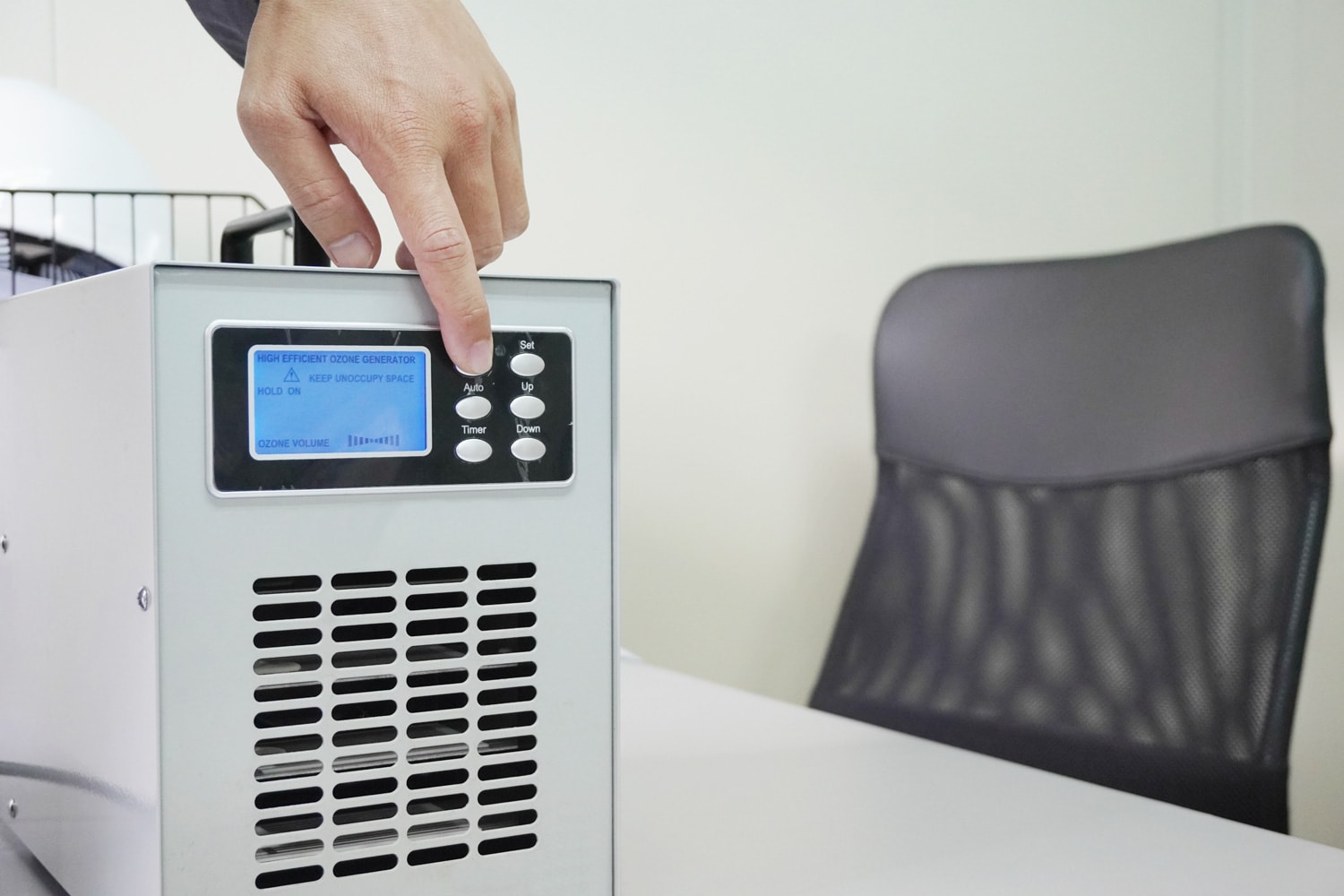
Here is how to operate an ozone generator to kill mold:
1. Pick Your Ozone Generator
Ozone generators come in sizes varying on the space they can cover, output level, and features. Note that higher output is better if you'll use it to eliminate mold.
If you want one to use at home or in large spaces, check out this product:
Click here to get the Airthereal MA10K-PRO Ozone Generator on Amazon.
If you want a more portable option, consider this portable machine:
Check out the Airthereal AH1000 Portable Ozone Machine on Amazon.
2. Prepare The Room
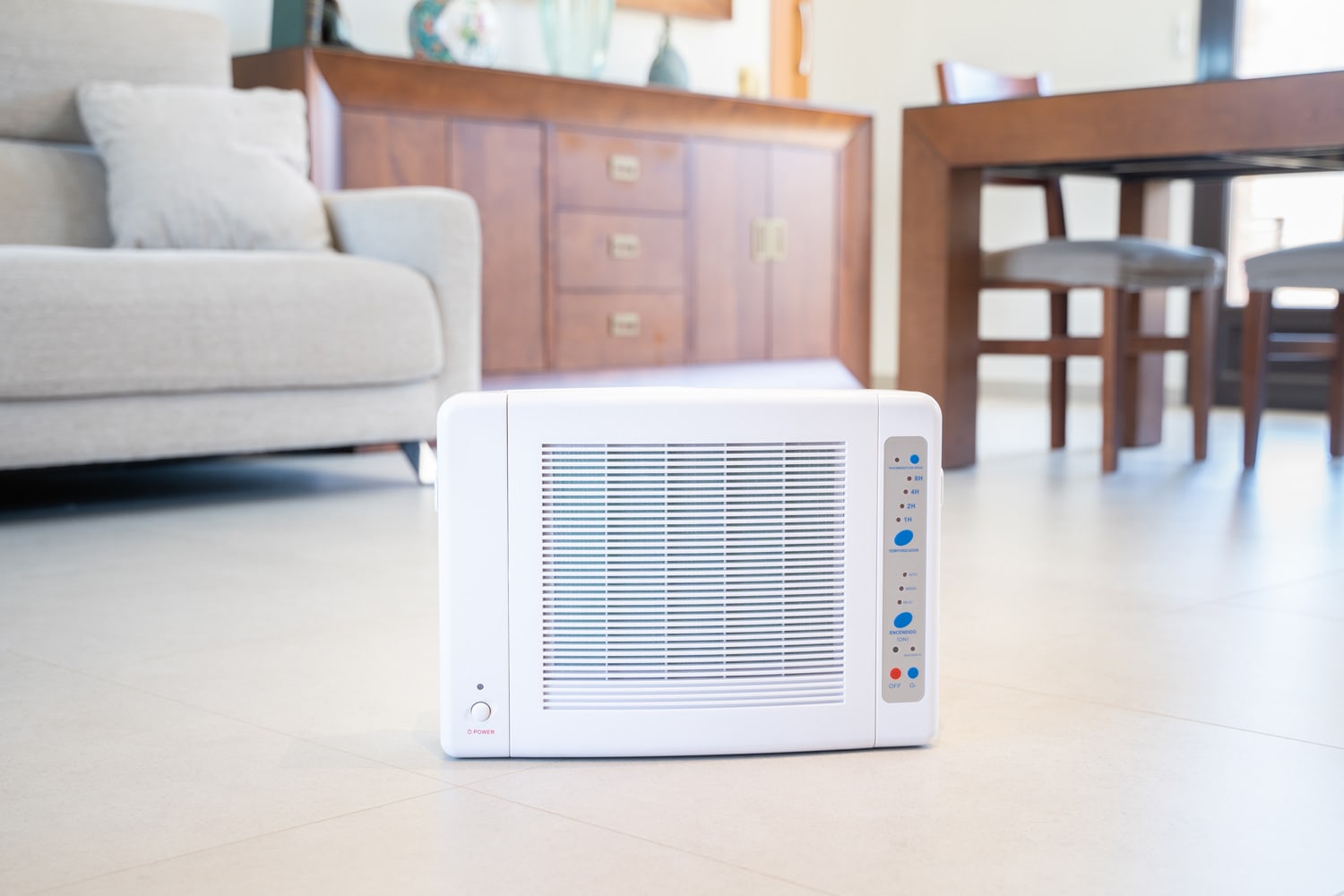
Ozone can kill mold better when the surroundings are dry, so remove moisture and seal any leaks or gaps. After, cover up any belongings made up of metal and paper to prevent unwanted reactions.
Lastly, evacuate the room with your pets and plants to prevent health impacts. Due to high ozone levels, it's crucial to keep the space unoccupied.
You should also remove visible sources of mold before turning on the machine. Because ozone generators mainly target invisible components, you must still eliminate the primary source yourself.
3. Set The Timer
The time you should let your ozone generator run depends on your purpose and the area size.
Killing mold may require a longer time, but the average ranges between 3 to 6 hours. It may take longer if you want to run it through multiple rooms.
If your generator has a built-in timer, set it to your desired time. When the time is up, the machine will automatically shut off. If it doesn't have a timer, set the time yourself, then manually turn off the device after.
4. Turn It On
Once you have everything ready, turn on the device. Be sure to evacuate the room once it starts spreading. If you must stay inside to operate it, cover your mouth and nose or wear the appropriate gear.
Safety Precautions When Using Ozone Machines
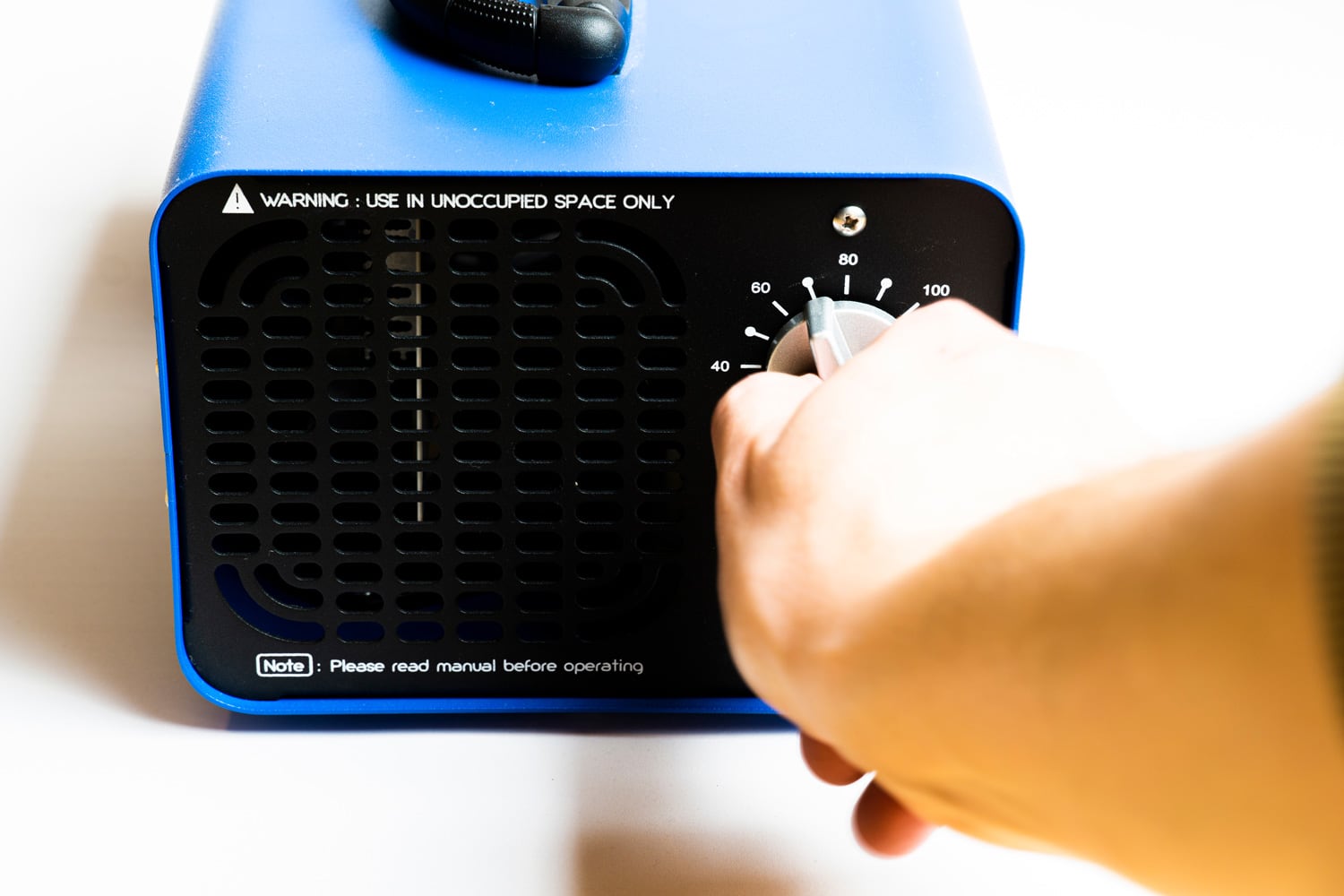
Using an ozone machine can risk your health from high ozone exposure. These usually result in respiratory complications, including asthma or irritation. When concentration levels are high, negative impacts can also occur in pets and plants.
Listed below are some reminders to follow when handling an ozone generator:
Wear Protective Gear
You'll need to cover your mouth and nose when the ozone machine runs. But if you have to stay nearby or within the room, it's essential to have the proper gear.
Wear protective eye equipment, a respiratory mask, gloves, and a protective gown.
You don't have to get everything, but you may be required to at least have a respiratory mask and eye protection.
Click here to get the 3M Half Facepiece Reusable Respirator on Amazon.
Get the Super More Anti-Fog Protective Goggles on Amazon.
Keep The Room Closed
Keep windows and doors closed while the ozone generator runs. That way, the ozone circulates sufficiently around the space. It also prevents additional exposure to the gas, especially after evacuating the area.
Wait It Out
Even after the ozone machine turns off, do not immediately return to the room. Wait 30 minutes to about 4 hours to give the gas time to dissipate into breathable air.
Note that you should wait longer if the output is higher or the gas reaches more spaces.
How To Kill Mold In Ductwork
A moldy duct affects the performance of your HVAC system and may blow mold spores to the rest of your home.
Fortunately, there are ways you can clean it out and kill mold without contacting a professional.
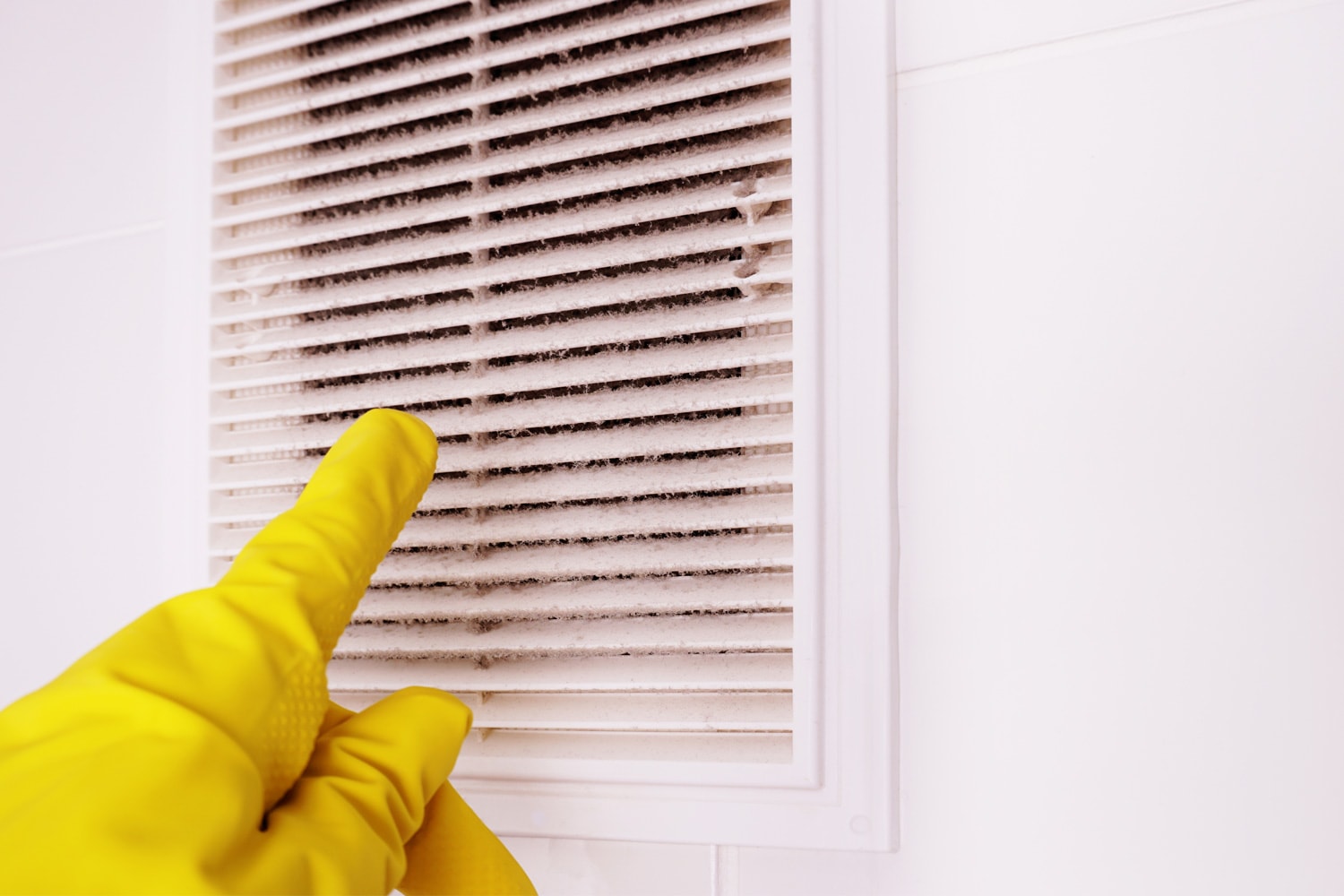
If you're dealing with mold in your car's HVAC, read how to solve it in this post: "How To Get Rid Of Mold In Car Air Conditioner? [4 Helpful Solutions]."
You can either eliminate the mold through scrubbing or using a machine. Here's how to do it.
By Scrubbing
- Wear gloves, coveralls, eyewear, and a breathing mask.
- Purchase a mold removal cleaner or create your solution by mixing a tablespoon of household detergent, half a cup of baking soda, and a cup of water for porous surfaces. Do 1 part bleach with 16 parts water for use on non-porous surfaces.
- Turn off the HVAC system. Shut it off directly from the breaker as an extra precaution.
- Use a spray bottle to soak moldy spots in the ducts and vents with your cleaner, then leave it for a few minutes. Follow the instructions if you purchased a mold remover.
- Take a brush or rag and carefully scrub the areas in a circular motion until the mold comes off.
- Place paper towels on the surface to soak excess solution.
- Wipe the area thoroughly or vacuum it until you feel satisfied or there are no traces of mold.
- Dispose of the contaminated rags or towels by double-bagging them or using thick trash bags.
- Clean and replace filters, covers, and registers.
Using An Ozone Generator
- Choose an ozone generator that releases enough gas to fill your whole duct and vent system.
- Run a quick cleaning on the ductwork using a vacuum or your chosen equipment. Cover furniture or valuables around the vents to protect them from debris.
- After cleaning, cover every vent and air intake of the system. You can use cardboard to block it and seal the edges with duct tape.
- Choose one vent and uncover enough only to thread the ozone generator's hose in, securing it by taping around it to the cardboard.
- Turn the generator on and let it run for a few hours.
- When the device finishes, keep the vents covered for a couple more hours until the ozone goes back to being breathable air. If you're working on the ducts individually, move the hose and generator until you cover every duct.
Learn how to deal with condensation on ductwork in this post: "Condensation On Ductwork Between Floors—What To Do?"
Alternative Ways To Get Rid Of Mold
You can prevent mold by controlling humidity levels and ensuring they stay constant, like with dehumidifiers or exhaust fans. But once moisture collection starts, bacteria growth is likely to follow.
Low levels of mold and mildew don't require you to contact a professional. Instead, you can kill it with these remedies.
Homemade Solutions
If you can't find a mold removal cleaner, you can make a mixture using bleach, vinegar, or baking soda.
For a bleach solution, mix 1 part bleach with 10 parts water. Most recommend using this for non-porous surfaces with minimal amounts of mold.
To create a solution with vinegar, pour distilled white vinegar into a spray bottle without dilution. You can use this on different surfaces since applying it is generally safe.
When making a baking soda solution, take a teaspoon of baking soda with 2 cups of water and shake well. Baking soda is another harmless mixture that also offers deodorizing properties.
Hydrogen Peroxide
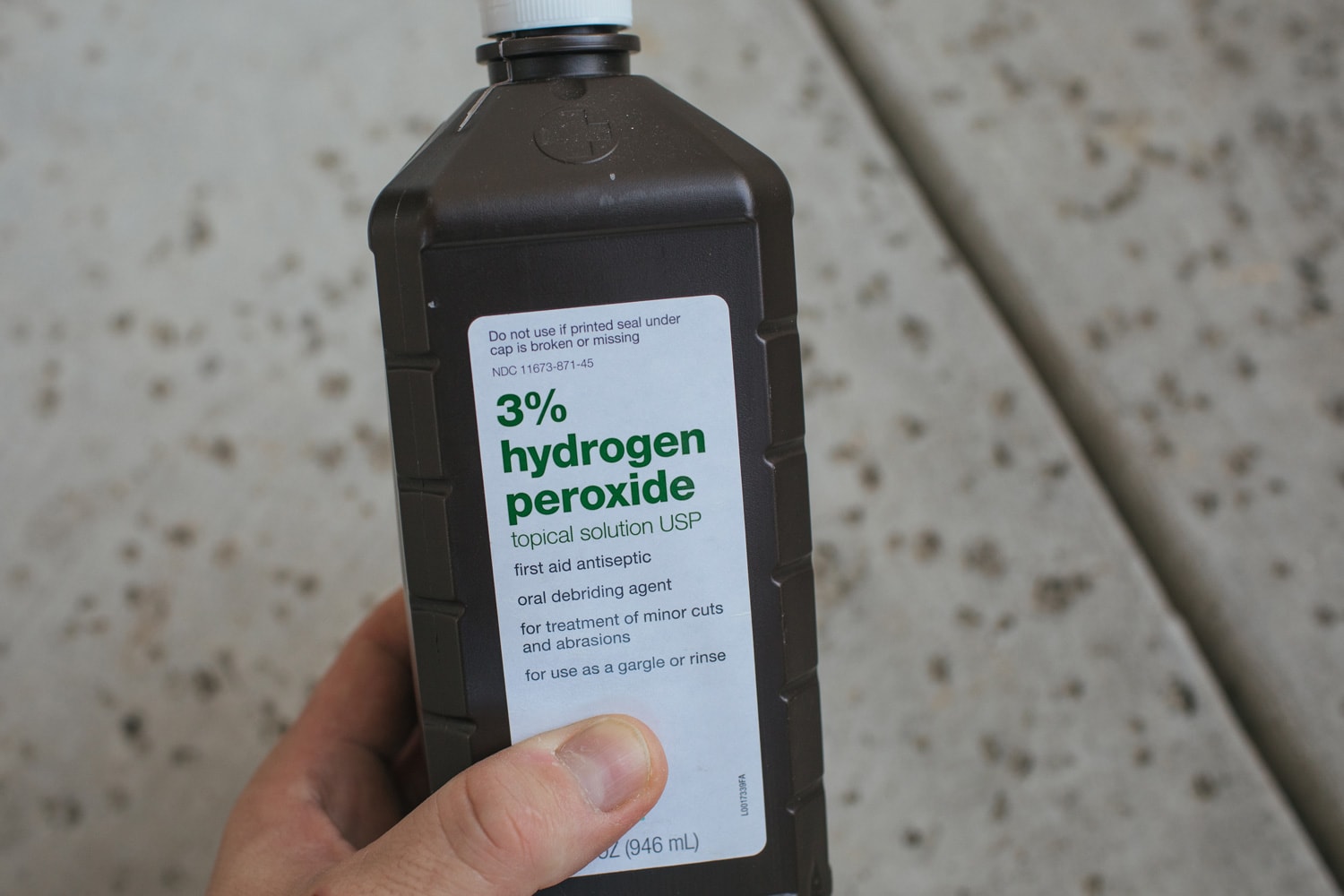
Besides preventing wound infection, hydrogen peroxide is also strong against mold. You can use it on porous and non-porous surfaces but need spot testing before application to ensure it doesn't harm materials.
You only need to take 3 percent hydrogen peroxide solution into a spray bottle without diluting it.
Essential Oils
Essential oils, especially tea tree oil, effectively kill and clean mold safely on top of being a natural deodorizer. To create the mixture, add a tablespoon of the oil to a cup of water and shake it well.
Be wary if you have pets around since it may be harmful if they ingest it.
Lemon
Lemons offer high levels of acidity that allow them to become a natural mold remover and cleanser. To use them, juice 3 to 5 lemons and use the solution to pour onto moldy areas.
In Summary
You can use an ozone generator to kill mold on different surfaces and locations, but experts usually recommend this option last due to its adverse impacts on health.
In contrast to an ozone generator's simple operation, using it requires you to take several precautionary measures to ensure safety throughout the mold elimination process.




